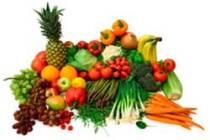The first vegetarian I ever met was Sid Pearson. We were Boy Scouts together and one day, as we tramped to an autumn campsite, Sid suddenly dropped his pack and darted into the woods to reappear moments later munching a mouthful of something which he explained, with rivers of brown juice dribbling down his smiling face, was a fungus called dead badger’s finger or something and wasn’t he lucky to find one. He told me later, as we tried to get the stains out of his uniform, that his family was vegetarian. In those days I didn’t really know what a vegetarian was, but if it meant eating stuff like dead badger’s wossname, I wasn’t going to be one. It was probably then that I first realized I was an omnivore.
I have a better understanding of vegetarianism now, well sort of. It’s the vegetarians that I don’t always get right.
To my understanding vegetarians eat no flesh but many will eat dairy products but I am told that makes them lacto-vegetarians, in the same way as those who eat eggs become ovo-vegetarians while lacto-ovo-vegetarians will happily munch their way through a cheese omelette and salad (providing of course the cheese is made with microbial enzymes or vegetable rennet rather than rennet from calves’ stomachs). Vegans on the other hand eat no flesh, eggs, dairy or anything of animal origin and this includes food prepared with things like animal gelatine or any that have been in contact with animal products such as wines that have been fined using eggs etc.; honey is debateable with some claiming that bees die in its collection. Their philosophy also extends to the shunning of animal-derived non-food items such as leather and wool and silk clothing. Raw vegans take things a step further eating no food prepared by heating over 46˚C claiming this destroys some of the foods nutrients. These dietary preferences and the reasons for them, be they moral, religious, health or just personal taste, I can understand and respect, my confusion lies elsewhere.
In these days of multiplicitous and newly realized food allergies I generally ask people for whom I cook if there are things they do not eat. With increasing frequency the answer will be something like, “I’m a vegetarian…but I do eat fish” or “I’m a vegetarian but I will eat chicken.” To me it’s like saying “I’m teetotal but I drink Scotch.” I find it very confusing. Is it a “well-just-for-you” concession to me or a mistaken attempt to make my life easier by allowing me to cook what they think I consider normal? Are they trying to ease any embarrassment they feel at being vegetarian in the company of an omnivore, or is it they are just aren’t really vegetarians at all and if so, why can’t they just say that they don’t eat red meat or whatever else they would rather not consume instead confusing things? It has become so common that words have been created such as “pescatarian” for the fish-eating vego and “pollo-vegetarian” for the chicken eater. Taken to its extreme this would make me a “carne-pesca-pollo-lacto-ovo-fructo- vegetarian”, which, yes, is silly.
The problem that often arises at this entertaining time of year is what to serve at dinner to a group of friends professing a selection of these dietary preferences and/or taboos, without making some feel that they are only being given part of the meal. Lately I have found the most successful answer to this conundrum to be a buffet of Indonesian dishes. 
Central to the meal is gado-gado, an opulent platter of raw, cooked or blanched vegetables including baby potatoes, green beans, bean sprouts, cabbage, carrots, cucumber and daikon served at room temperature with a rich and spicy peanut sauce (make this from scratch as ready-made ingredients may offend) topped with crisp fried onions.
With this I serve fish, chicken, meat or tofu grilled on bamboo skewers or fried or braised in a carefully selected and prepared coconut sauce. I generally offer a dish of plain rice as well just in case some of the vegetables are not to everyone’s taste. Everyone feels special with their part of the meal, they all can eat the gado-gado (which is divine) and there is even an opportunity to proselytize as guests are encouraged try the preferences of others. I offer spicier sauces, pickles and condiments on the side for the more adventurous palates. Dessert is simple…fresh pineapple, melon, mango or pawpaw.
I shan’t give recipes but direct you to the easily available works of wonderful authors like Charmaine Solomon and Rosemary Brissenden…and Sid, if you’re out there…I’ve found NapiSan works wonders on food stains.










Join the Discussion
Type out your comment here:
You must be logged in to post a comment.